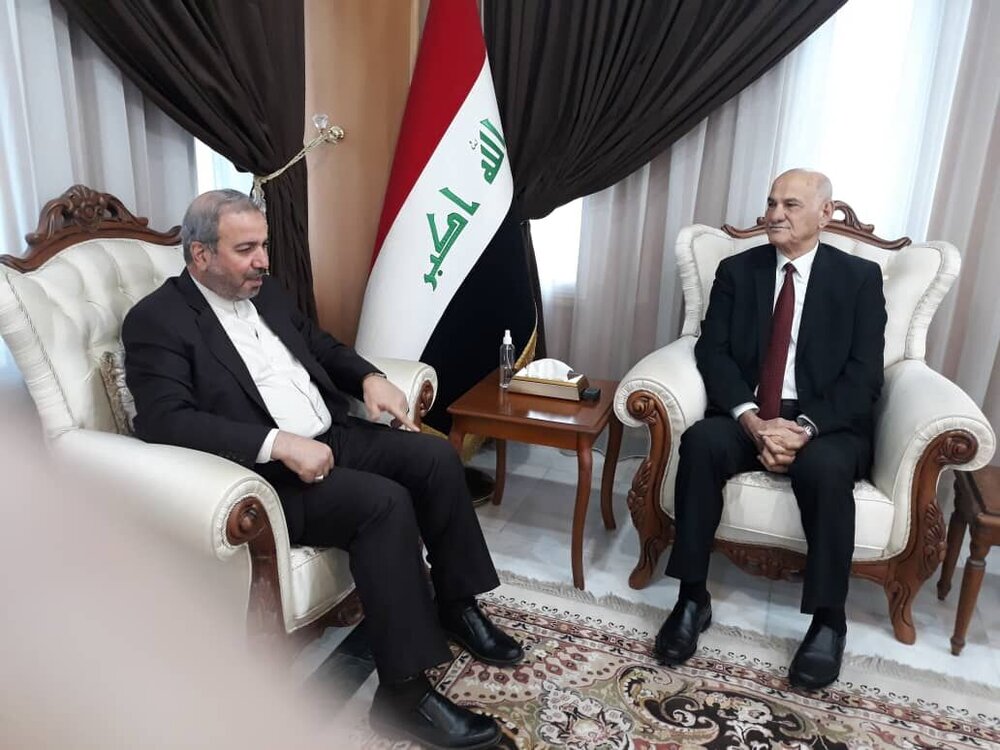Tehran, Baghdad negotiate on drought, SDSs control

TEHRAN – Iranian Ambassador to Iraq, Mohammad Kazem Al Sadeq, and Iraqi Minister of Water Resources, Awn Dhiab Abdullah, discussed ways to deal with joint environmental problems, such as drought as well as sand and dust storms.
In a meeting on Iraq issues on Thursday, the two officials emphasized the need to tackle SDS, water shortage, drought, and the dried Hour Al-Azim wetland.
The Iraqi minister while pointing out the destructive consequences of drought and climate change in the region and its more seriousness in Iraq, considered the cooperation of the two countries necessary to solve these problems and declared his readiness for any cooperation in this field.
Resolving water scarcity and dealing with SDSs has now become a common regional demand and everyone is expected to contribute to determining a solution for the challenges, he added.
Earlier, Ali Salajeqeh, head of the Department of Environment of Iran, said in a meeting with Iraqi officials that “Today, the region and the world are suffering from climate change, the result of which is the creation of sand and dust storms for the entire region, suggesting to transfer experiences in dealing with desertification.
In October, Iran dispatched a team of experts to Iraq to visit critical sand and dust storm hotspots, and a memorandum of understanding (MOU) was signed between Iran and Iraq with the aim of confronting the phenomenon of SDSs.
SDS is a problem that has plagued our country for several years, most of which enters Iran from Iraq and Syria. According to experts, natural and human factors are involved in the occurrence and severity of this phenomenon which is mainly caused by excessive consumption of water and drying up reservoirs.
The internal dust sources are estimated at 34.6 million hectares, generating an average amount of 4.22 million tons of dust per year, about 1.460 million hectares are dried wetlands.
Some 4.23 million tons of dust are raised per year, which means the loss of soil fertility will hit the agricultural sector.
All the SDSs sources are not located in Iran, 300 million hectares in the neighboring countries are giving rise to SDSs, which transport dust into Iran. The total dust density is estimated at about 150 million tons.
In fact, the dust is raised from Turkmenistan, Uzbekistan, Afghanistan, and Pakistan in the northeast as well as Iraq, Syria, Saudi Arabia, and Jordan in the south, southwest, and west.
FB/MG
